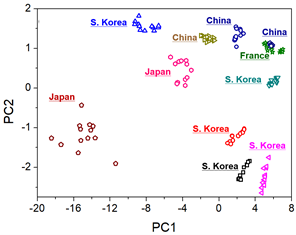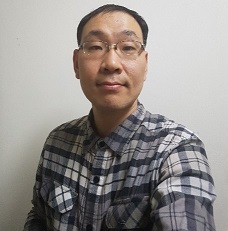Outstanding Webinar Series on Laser Ablation Chemical Analysis: Effective Classification of Edible Sea Salts Using LIBS, Tandem LA-ICP-MS & LIBS, and Other Hyphenated Approaches
Applied Spectra, Inc. invites you to attend our 3rd webinar of the outstanding webinar series on laser ablation chemical analysis. This webinar features the innovative LIBS and Tandem LA – LIBS research work by Dr. Yonghoon Lee’s research team at Mokpo National University, Mokpo, South Korea. His LIBS research involves use of LIBS and hyphenated LIBS technique to better characterize geographical origin and quality of edible salts. Dr. Lee’s innovative research approach involving fusion of data and use of chemometric analysis can apply to the similar analysis of many industrial materials

In recent times, Laser Induced Breakdown Spectroscopy (LIBS) has gained steam in becoming a rapid technique for determining material origin and authenticity. LIBS provides unique spectra specific to different materials that become the barcode or fingerprint useful for identifying samples in question. Furthermore, advances in data analytics enable fusion of LIBS data with other techniques such as LA-ICP-MS and, combined with chemometric data processing, LIBS data is powerful analytical information for checking material for its quality, origin, and authenticity. The edible salts, the widely used food additives, is a mixture of various ionic compounds in NaCl matrix. Elemental composition of salts is related to the quality, production method, and geographical origin. In this webinar, Dr. Lee will highlight some of his LIBS research (both standalone or hyphenated) on applications in the salt production industry. He will discuss feasibility of applying the technique for salt classification according to geographical origin and conducting quantitative analysis of key nutrient elements such as Mg, Ca, and K in edible salts.
Webinar Schedule
Duration:1 hr
Session 1
Tuesday, October 20, 2020 7:00 AM PST-8:00 AM PST
(or 4:00 PM to 5:00 PM EU) Open to all: recommended for attendees in the EU and USA
Session 2
Wednesday, October 21, 2020 10:00 AM to 11:00 AM (Seoul and Tokyo Time)
(or Tuesday October 20, 2020, 6:00 PM to 7:00 PM San Francisco, USA) Open to all: recommended for attendees in the Asia, SE Asia, and Australia
Webinar Abstract
In this presentation, LIBS and hyphenated LIBS techniques are demonstrated for effectiveness in discriminating edible salts from different geographical origin or production method. Discrimination powers of emission lines of Mg, Ca, and K and other minor elements observed in LIBS spectra of the edible salts are discussed based on PCA analysis and associated loading plots. Moreover, Laser-Ablation-Inductively-Coupled-Plasma-Mass-Spectrometry (LA-ICP-MS), which can be performed simultaneously with LIBS during the sampling process, provides independent and complementary information on the chemical composition of salts with respect to that obtained by LIBS. Also, even a simple technique such as Diffuse Optical Reflectance Spectroscopy (DORS) can contribute to the salt classification with additional discrimination power. We will introduce the fusion of different spectroscopic data (LIBS-LA-ICP-MS and LIBS-DORS) in this presentation.

Characteristic LIBS spectra from edible salts from different geographical origin

PCA grouping of edible salts from different countries
The webinar will also highlight the quantitative analysis of nutrient elements in the edible salts (Mg, Ca, and K) and calibration approach to account for matrix effects and to still maintain analysis accuracy. A simple prototype LIBS set up was developed and used to show the possibility of applying LIBS to measure key elements in the edible salt at commercial salt production factories.
Webinar Presenter

Dr. Yonghoon Lee, Mokpo University, Mokpo, South Korea
Professor Yonghoon Lee conducts teaching and research in the department of chemistry at Mokpo National University, Mokpo, South Korea. He is also the chair of the chemistry department at the university. Dr. Lee received his PhD at KAIST (Korea Advanced Institute of Science and Technology) in the field of high-resolution molecular spectroscopy.
Prior to joining Mokpo National University as a faculty member, he worked for Natural Science Research Center at KAIST, Samsung Electronics, and Advanced Photonics Research Institute at GIST (Gwangju Institute of Science and Technology) and has been a Physical Chemistry Professor in Department of Chemistry at Mokpo National University since 2009. He served as a visiting scientist at Lawrence Berkeley National Laboratory in 2015-2016. His research interest is developing LIBS and hyphenated LIBS techniques for the applications in food, steel, and nuclear industries.



